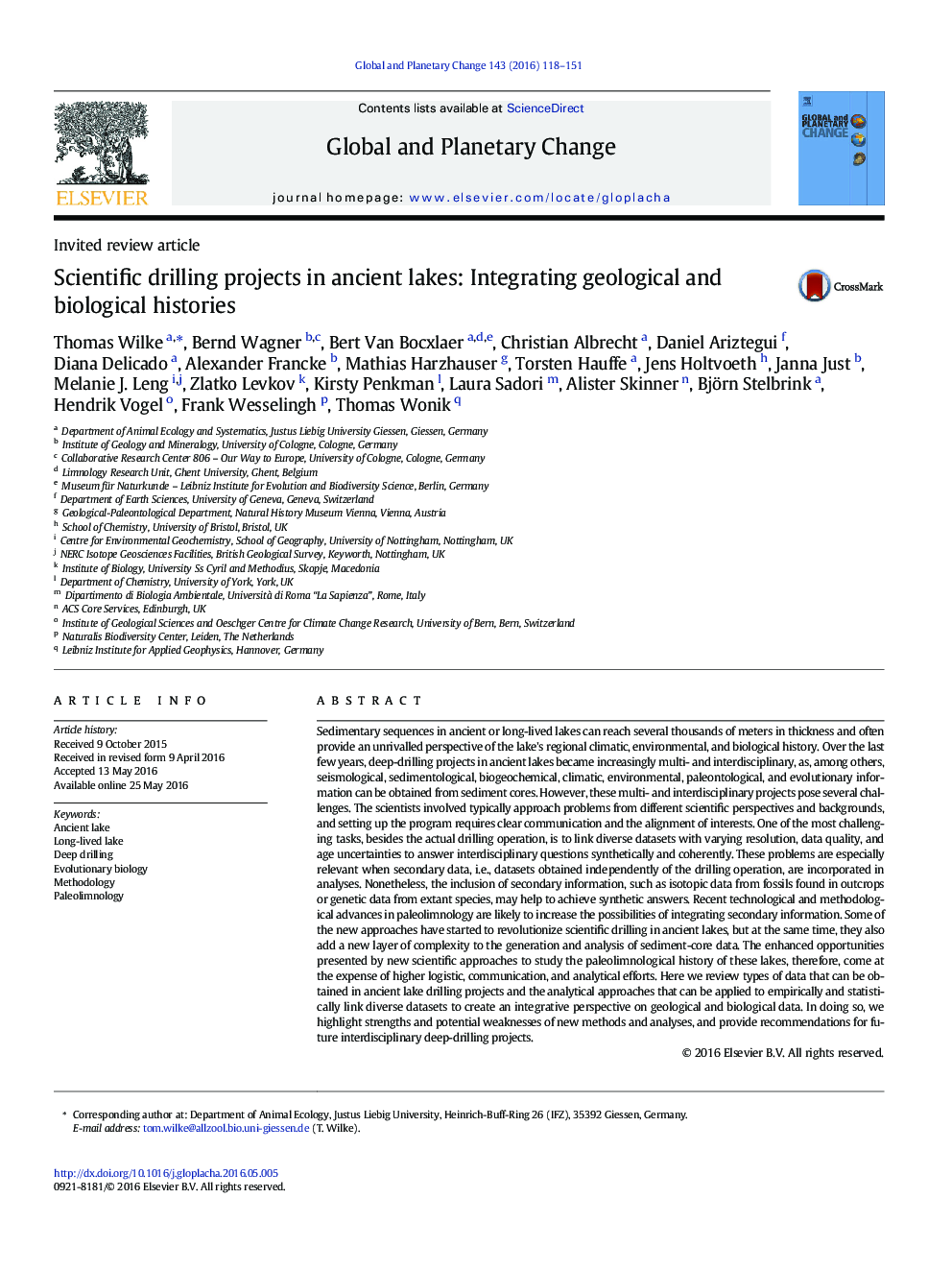| کد مقاله | کد نشریه | سال انتشار | مقاله انگلیسی | نسخه تمام متن |
|---|---|---|---|---|
| 4463298 | 1621639 | 2016 | 34 صفحه PDF | دانلود رایگان |
• Drilling projects in ancient lakes have become multi- and interdisciplinary.
• Statistically linking geological and biological histories remains challenging.
• Both potentials and weaknesses of new methods have to be considered.
• Data interpretation is affected by drilling operation and sediment core storage.
• Interdisciplinary drilling projects enable a holistic view on scientific problems.
Sedimentary sequences in ancient or long-lived lakes can reach several thousands of meters in thickness and often provide an unrivalled perspective of the lake's regional climatic, environmental, and biological history. Over the last few years, deep-drilling projects in ancient lakes became increasingly multi- and interdisciplinary, as, among others, seismological, sedimentological, biogeochemical, climatic, environmental, paleontological, and evolutionary information can be obtained from sediment cores. However, these multi- and interdisciplinary projects pose several challenges. The scientists involved typically approach problems from different scientific perspectives and backgrounds, and setting up the program requires clear communication and the alignment of interests. One of the most challenging tasks, besides the actual drilling operation, is to link diverse datasets with varying resolution, data quality, and age uncertainties to answer interdisciplinary questions synthetically and coherently. These problems are especially relevant when secondary data, i.e., datasets obtained independently of the drilling operation, are incorporated in analyses. Nonetheless, the inclusion of secondary information, such as isotopic data from fossils found in outcrops or genetic data from extant species, may help to achieve synthetic answers. Recent technological and methodological advances in paleolimnology are likely to increase the possibilities of integrating secondary information. Some of the new approaches have started to revolutionize scientific drilling in ancient lakes, but at the same time, they also add a new layer of complexity to the generation and analysis of sediment-core data. The enhanced opportunities presented by new scientific approaches to study the paleolimnological history of these lakes, therefore, come at the expense of higher logistic, communication, and analytical efforts. Here we review types of data that can be obtained in ancient lake drilling projects and the analytical approaches that can be applied to empirically and statistically link diverse datasets to create an integrative perspective on geological and biological data. In doing so, we highlight strengths and potential weaknesses of new methods and analyses, and provide recommendations for future interdisciplinary deep-drilling projects.
Figure optionsDownload as PowerPoint slide
Journal: Global and Planetary Change - Volume 143, August 2016, Pages 118–151
